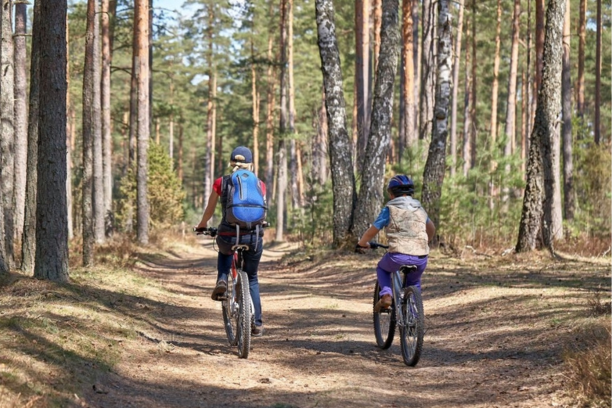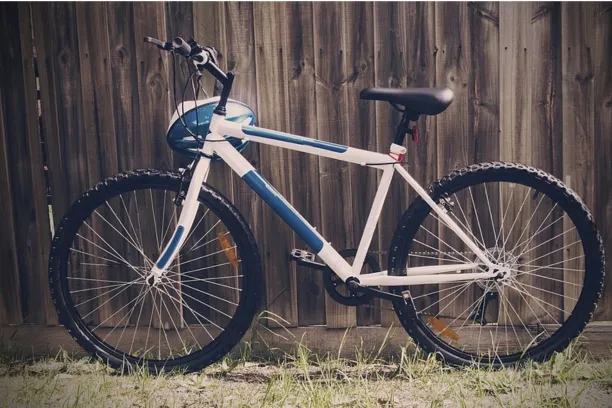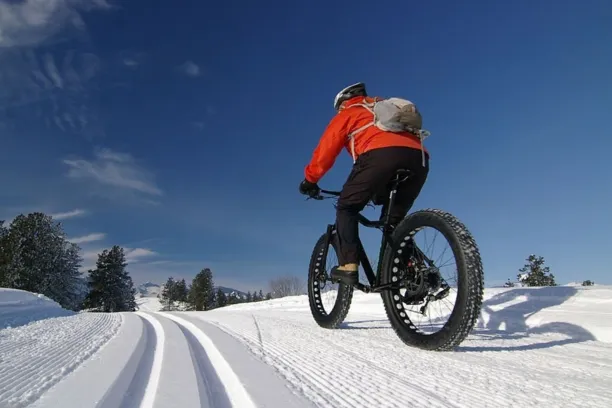Hardtail vs. Full Suspension: which is right for you?
Are you torn between choosing a hardtail or a full-suspension mountain bike? Don’t worry, we’ve got you covered! In this article, we’ll dive into the world of mountain biking and explore the key differences between hardtail and full-suspension bikes.
Whether you’re a beginner or an experienced rider, understanding these options will help you make an informed decision for your next thrilling adventure on the trails. Let’s get started!
Understanding Hardtail Bikes
A hardtail bike is a type of mountain bike that features suspension only in the front fork, while the rear remains rigid or “hard.” This design differs from full-suspension bikes that have both front and rear suspensions. The absence of rear suspension creates a simpler frame structure with fewer moving parts.
Definition and Characteristics of Hardtail Bikes
Hardtails are known for their lightweight construction and efficient power transfer. With their rigid rear end, they excel at climbing steep terrains by providing excellent pedaling efficiency.
The lack of rear suspension components makes them more affordable compared to full suspension bikes.
Benefits of Riding a Hardtail Bike
- Efficiency: The rigid back end allows for better energy transfer during climbs, resulting in increased speed.
- Maintenance: Fewer moving parts mean less maintenance work required.
- Cost-Effective: Generally priced lower than full suspension counterparts due to simpler designs.
Drawbacks of Riding a Hardtail Bike
- Comfort on Rough Terrain: Without rear suspension, rides on rough terrain may feel more jarring compared to full suspension bikes.
- Limited Traction: Rear wheel traction can be compromised on technical descents or extremely uneven surfaces.
When to Choose a Hardtail Bike
Hardtails are best suited for smoother trails like cross-country routes or those without excessive bumps or obstacles. When considering purchasing one, factors such as your budget constraints and personal preferences should be taken into account.
Remember, choosing between hardtails and full suspensions ultimately depends on the type of terrain you plan to ride and your individual riding style. Now that we have a solid understanding of hardtail bikes, let’s move on to the next section where we’ll explore full-suspension bikes in detail.
Exploring Full Suspension Bikes

A full-suspension bike is a type of mountain bike equipped with both front and rear suspensions. Unlike hardtail bikes that have only front fork suspension, full suspension bikes provide enhanced shock absorption on both ends. This allows for increased comfort, control, and traction while tackling challenging terrains.
Definition and Key Features of Full Suspension Bikes
Full suspension bikes feature a complex frame design consisting of front fork suspension as well as rear shock absorbers connected to the swingarm. The combination of these components enables better handling on rough trails by absorbing impacts from obstacles like rocks or roots.
Advantages of Riding Full Suspension Bikes
- Enhanced Comfort: With two sets of suspensions, full-suspension bikes offer improved cushioning over rough terrain.
- Better Control: The additional rear suspension helps maintain traction on technical descents and through corners.
- Increased Traction: Rear-wheel contact with the ground remains consistent due to the active rear shock absorber.
- Smoother Descents: The ability to absorb larger hits makes downhill rides more enjoyable.
When to Opt for Full Suspension Bikes
Full suspension shines in downhill rides or technical trails where bumps and obstacles are frequent. If you frequently encounter rocky descents or enjoy pushing your limits on challenging terrain, choosing a full-suspension bike would be beneficial.
Comparing Hardtails vs. Full Suspensions
Now that we have explored hardtail and full-suspension bikes individually, it’s time to compare them head-to-head.
We will delve into the performance differences between these two bike types, examine their price ranges, and discuss maintenance considerations. By the end of this comparison, you’ll have a clearer understanding of which option aligns better with your riding style and preferences.
Performance Differences Between Hardtails and Full Suspensions
When it comes to performance, hardtail bikes excel in certain areas while full suspension bikes shine in others.
We will compare speed, efficiency, climbing abilities, and other crucial factors to help you make an informed decision about which bike suits your needs best.
Price Range Comparison
Price is often a significant consideration when purchasing a mountain bike. We’ll break down how prices differ between hardtails and full suspensions based on the components used in each category.
This analysis will help you determine the most suitable option within your budget without compromising on quality or performance.
Maintenance Considerations
Proper maintenance ensures long-lasting performance for any bike. In this section, we will outline the maintenance requirements for both hardtail and full-suspension bikes.
Understanding these aspects will assist you in making an informed decision by considering factors such as regular servicing needs or potential costs associated with specific components.
FAQs
What is the main difference between a hardtail and a full-suspension bike?
A hardtail bike has only a front suspension, while a full suspension bike features both front and rear suspensions. The presence of rear suspension on full-suspension bikes provides better shock absorption and increased comfort on rough terrains.
Which type of bike is more suitable for cross-country riding?
For cross-country riding, where efficiency and speed are prioritized, a hardtail bike is often preferred. Its rigid frame allows for better power transfer during pedaling, resulting in improved speed and climbing abilities.
Are full-suspension bikes only meant for downhill or technical trails?
While full suspension bikes excel in downhill rides or technical trails due to their enhanced traction and control, they can also be suitable for various terrains depending on personal preferences.
Do all mountain bikers need a full-suspension bike?
No, not all mountain bikers require a full-suspension bike. It ultimately depends on individual riding style, terrain preference, and budget constraints.
Is maintenance more complicated with a full suspension compared to a hardtail?
Full-suspension bikes do require slightly more maintenance due to the additional moving parts involved with the rear shock absorber system.
Conclusion
Hardtails offer efficiency and affordability for smoother trails and cross-country rides. On the other hand, full-suspension bikes provide enhanced comfort, control, and traction on rougher terrains or downhill adventures.
Remember to weigh the pros and cons of each type before making your decision. Ultimately, whether you opt for the simplicity of a hardtail or the versatility of a full-suspension bike will depend on your personal preferences and desired riding experience. Happy biking!






